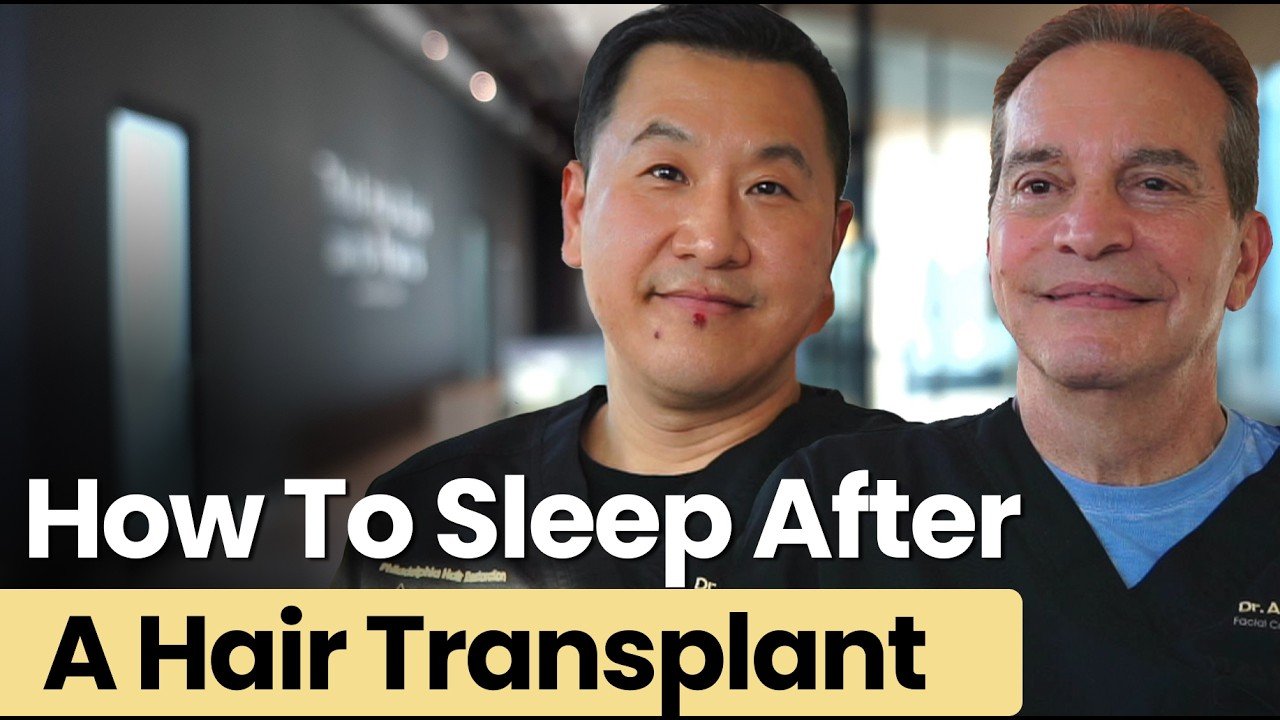If you’re struggling with the decision to undergo a hair transplant, understanding the evolution from outdated hair plugs to advanced hair transplant techniques like FUE and PRP can help you make a more informed choice for achieving a natural-looking hairline. So, what’s the difference between hair plugs vs. hair transplants?
In this article, we explore the transition from the early days of hair plugs to the modern era of hair transplants. We delve into the significant advancements in hair transplant techniques, the differences in aesthetic outcomes, and the variations in recovery processes.
Keep reading to learn how these advancements can impact your hair restoration journey, and see how Philadelphia Hair Restoration can help you achieve the best possible results.
What Are Hair Plugs?
Introduced about 20 years ago, hair plugs involve using large punch grafts (4.0 mm to 5.0 mm) to harvest groups of hair follicles. This often results in unnatural hairlines because it groups follicles together, making precise hairline redesign challenging. The large grafts could create a “pluggy” appearance, leading to visible, clumped patches of hair that contrast starkly with the surrounding natural hair.
This outdated hair restoration technique, sometimes known as hair implants, also often left noticeable scars and required multiple sessions, causing extended recovery periods and discomfort for patients. As a result, hair plugs have largely fallen out of favor with hair transplant surgeons due to their less-than-ideal cosmetic results and the advancements in hair restoration technology.
What Is A Hair Transplant?
A hair transplant is a surgical procedure to address hair loss and balding by redistributing hair follicles from one part of the body, usually the back or sides of the scalp, to the thinning or balding areas. This method has evolved significantly from the days of hair plugs to include advanced techniques that offer transplanted hair with natural-looking results and improved patient satisfaction.
Modern techniques like Follicular Unit Extraction (FUE) have revolutionized hair transplants. FUE uses micro-sized punches to harvest follicles individually, allowing for a more natural hair growth pattern, artistic hairline reconstruction, and improving the outcomes of hair restoration procedures. Modern hair transplant methods also focus on minimizing scarring and reducing recovery time, making the procedures more efficient and effective.
Different Types of Hair Transplant Procedures
There are several modern hair transplant surgery procedures and treatment options compared to hair plugs, each with its own unique approach and benefits. Understanding these options, including the differences between FUE and PRP hair treatment, can help you choose the best method to achieve your desired results:
- Follicular Unit Extraction (FUE):
- Uses tiny punches to extract individual hair follicles.
- Minimally invasive with minimal scarring.
- Offers quicker recovery time and natural-looking results.
- Ideal for patients who prefer short haircuts since scars are barely noticeable.
- Follicular Unit Transplantation (FUT):
- Involves removing a strip of skin from the donor area.
- Allows for the transplantation of a larger number of grafts in one session.
- Leaves a linear scar that can be concealed with existing hair.
- Suitable for patients requiring extensive hair restoration.
- Platelet-Rich Plasma (PRP) Therapy:
- Uses the patient’s own blood, processed to concentrate platelets.
- Platelets are injected into the scalp to stimulate hair growth.
- Non-surgical with minimal downtime.
- Enhances hair thickness, health, and overall scalp condition.
Key Differences Between Hair Plugs & Hair Transplants
While both hair plugs and modern hair transplants aim to restore hair, they differ in techniques, results, and the recovery process. A hair plug or hair implant is an older method that has largely been replaced by more advanced and effective procedures. This has caused hair transplants, such as FUE and FUT, to grow in popularity, offering improved techniques that provide more natural-looking results and quicker recovery times.
Technique & Procedure
Hair plugs involve using large punch grafts to transplant groups of hair follicles, which can result in unnatural, clumpy hair patterns. In contrast, hair transplants like FUE and FUT utilize smaller grafts and individual hair follicle units.
FUE hair transplant extracts individual hair follicles using micro-sized punches, whereas FUT removes a strip of skin to harvest follicles, allowing for a more precise and natural placement of hair grafts.
Results & Aesthetics
The aesthetic results of traditional hair plugs often appear unnatural due to the large graft size and grouped follicles, leading to a “doll’s hair” effect. Current-day hair transplants, however, focus on creating a natural hairline and seamless integration with existing hair.
Techniques like FUE and FUT hair transplantation enable the artistic placement of individual follicles, ensuring a more realistic and appealing look that closely mimics natural hair growth patterns.
Scarring & Recovery
Hair plugs can leave significant scarring due to the large punch grafts and less refined technique. Recovery is often longer and more uncomfortable. FUE hair transplants result in minimal scarring, as tiny punches heal quickly and are barely noticeable. While, FUT may leave a linear scar that can be easily concealed.
Both modern methods generally offer quicker recovery times and less post-operative discomfort compared to older hair plug techniques.
Why Did Doctors Make The Switch To Hair Transplants Instead of Hair Plugs?
Doctors transitioned from hair plugs to hair transplants due to the advancements in medical technology and the improved outcomes they offer. Hair plugs often resulted in unnatural, clumpy appearances and left noticeable scars, making them less desirable for patients.
As understanding of hair loss evolved, so did the methods for treating it, leading to the development of more refined and effective procedures like Follicular Unit Extraction (FUE) and Follicular Unit Transplantation (FUT). These techniques allow for a more natural look of newly transplanted hair, quicker recovery, and minimal scarring, meeting the higher standards and expectations of today’s patients.
Advantages of a Hair Transplant Procedure
Hair transplant procedures offer numerous benefits over the older hair plug method. These advantages include:
- Natural Appearance: Modern techniques like FUE and FUT provide a more natural hairline and seamless integration with existing hair, avoiding the “doll’s hair” effect associated with hair plugs.
- Minimal Scarring: Procedures like FUE use tiny punches to extract follicles, resulting in minimal scarring that is virtually undetectable. This makes them ideal for those who prefer short haircuts and already have thinning hair.
- Quicker Recovery: Advanced techniques have reduced recovery times significantly, allowing patients to return to their normal activities faster and with less discomfort.
Additionally, hair transplant procedures are suitable for individuals experiencing hair loss at different stages of life. While there isn’t a specific ideal age, individuals typically consider transplants between their late 20s and early 50s, when hair loss patterns become more predictable. This ensures a more successful and lasting outcome for those losing hair.
Contact Philadelphia Hair Restoration for a Hair Transplant Consultation Today!
Transform your appearance and regain your confidence with Philadelphia Hair Restoration. With over 18 years of experience, the clinic has served more than 1,000 clients with a 100% success rate. Led by Dr. Anthony Farole and Dr. Kenneth Nam, the team uses advanced techniques like FUE, FUT, and PRP to ensure natural-looking, permanent results. Their personalized approach, combined with cutting-edge technology, makes them a trusted choice for real hair restoration.
Book a consultation with Philadelphia Hair Restoration today and learn how a hair transplant can transform your look with a new, full head of hair in no time.



